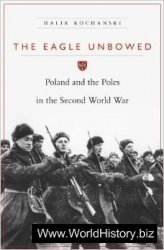Denmark and Sweden proved to have the two most influential Scandinavian national cinemas. As with Italian Neorealism and French postwar cinema, their first contributions to 1940s art cinema were made during the war.
Denmark had a strong film industry in the 1910s, but it lost its international standing during World War I. Late in the 1930s, Danish cinema regained some ground, thanks partly to generous government policies that taxed ticket prices to create a fund for artistic and cultural filmmaking.
The Germans invaded Denmark in 1940. As elsewhere, the Nazis’ ban on film imports from the Allied countries spurred domestic production. Documentary and educational films continued to be made under the Occupation, but the most important film, made for the country’s major firm, Palladium, was Carl Theodor Dreyer’s Day of Wrath (1943). This somber study of witchcraft and religious dogma in a seventeenth-century village marked Dreyer’s return to Danish feature filmmaking after almost two decades. The film caused a sensation and was widely interpreted as an anti-Nazi allegory. When it was shown abroad after the wai", it proved no less controversial, but more for its solemn tempo, its restrained technique (17.28), and its teasing ambiguities. Day of Wrath reestablished Dreyer on the international film scene (see box).
Swedish cinema had been in eclipse since Victor Sjostrom and Mauritz Stiller were lured to Hollywood. Sweden was not invaded by the Nazis, but its own policy of neutrality shut out any foreign films considered propagandistic. The lack of competition stimulated the local industry. In 1942, the major studio Svensk Film-industri hired Carl Anders Dymling as its head. He brought in SjOstrOm as artistic supervisor of production, a gesture that was considered to symbolize a return to the great Swedish filmmaking tradition.
Once the war ended, Danish and Swedish filmmaking benefited from Scandinavia’s rapid recovery. Annual film outputs averaged 15 to 20 features in Denmark and twice that in Sweden—lower figures than the wartime peaks but remarkably high for small countries. Here quality filmmaking was comparatively cheap. Production was dominated by large companies that insisted on small budgets and short shooting schedules. Denmark levied an entertainment tax to subsidize “artistic” films, and, in 1951, under pressure from filmmakers, Sweden initiated a comparable policy.




 World History
World History









